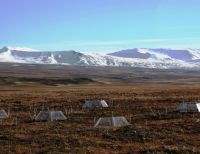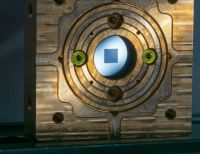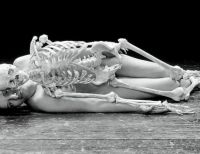A key element in successful green transition is investments in sustainable projects and companies. However, professional investors often complain that demands for return on investments from owners and other stakeholders hold them back from being as green as they would like to be. New software developed at DIKU (Department of Computer Science, University of Copenhagen) addresses this barrier.
“As an investor, you will initially choose minimum targets for return on investment and level of sustainability. The tool will then show you how to achieve both targets with the lowest degree of risk possible,” says Kasper Unn Weihe, Master of Computer Science. He developed the tool as part of his Masters project.
Obviously, the tool will not remove the risk associated with investing. But it will ensure, that the investor can pursue a dual goal of return on investment and sustainability without taking larger than necessary risk.
Utilizes the graphics unit of computers
The novel tool developed by Kasper Unn Weihe is related to the work of American mathematician Harry Markowitz. In the 1950’ies, Markowitz invented a model for balancing return on investment against risk when investing in stocks. The field is known as portfolio optimization.
The new tool introduces sustainability as an additional factor along with the traditional balancing of return on investment against risk.
“When you move from balancing return on investment against risk to also wanting to optimize sustainability, you must work in three dimensions rather than just two. This greatly increases the volume of calculations. Therefore, development of new software was called for. The main novelty is that my software allows for using a computer’s GPU (graphics processing unit, ed.) for the job.”
GPUs can do multiple operations simultaneously. This is highly useful in instances where a large task can be broken down into many independent small tasks. For example, a GPU will handle 3D graphics modelling by dividing the picture into thousands of tiny triangles that are calculated separately. A similar division is the basis of the sustainable investment software.
More on the method behind the new tool
Portfolio optimization builds on assumptions about future stock market developments. These assumptions are rooted in data on the past development of the various stocks.
The same goes for the new method. Only are the traditional data for return on investment and risk supplemented by data from the ESG (Environmental, Social, Governance) score index.
“It would be possible to include other types of data, for instance for CO2 emissions. But the ESG index is internationally recognized and well suited to demonstrate the value of the method for balancing return on investment and sustainability,” says Kasper Unn Weihe.
Of relevance to both professional and private investors
Users do not need access to a high-capacity computer, Kasper Unn Weihe notes:
“Many contemporary computers have GPUs of sufficient standard. Else, they can be bought for something like 1,500-3,000 DKK.”
In other words, using the new tool is not for a select few:
“The method was developed with professional investors in mind. However, I would hope that private investors would also find it useful. The more people including environmental and social responsibility concerns in their investment strategies, the better.”
The software is built on the programming language Futhark, developed at DIKU.
“It has been great to see the fundamental research on programming languages at DIKU finding application in balancing sustainability and return on investments,” says Martin Elsman, Professor at DIKU.
15 students involved in projects
Besides the Masters project of Kasper Unn Weihe, the field has spurred nine Bachelor projects within computer science / economics.
“The 15 students participating in these projects are motivated by the combination of computer science and theory of economics, and also by the wish for contributing to a more sustainable society,” says Martin Elsman.
The companies FinE og Optimal Invest Fondsmæglerselskab A/S have contributed to inspire the students. I.e., the companies have supplied the sustainability data sets for the calculations. The projects have received funding from Copenhagen Fintech.
Kasper Unn Weihe’s thesis ”Convex Optimization and Parallel Computing for Portfolio Optimization” to be found at: https://futhark-lang.org/student-projects/kasper-msc-thesis.pdf














